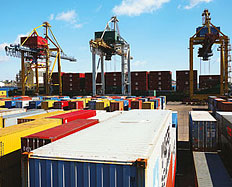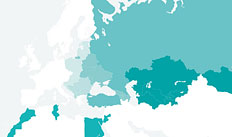Chapter 2
Labour Markets
In many transition countries labour markets never fully recovered from the 2008-09 crisis. Now they are likely to face further strains in the face of eurozone developments. Employment has generally failed to keep pace with GDP growth since 2010, although countries in the region vary significantly in the extent to which growth results in job creation (see Box 2.1).
Over the past year unemployment rates have fallen in the Baltic states, but nevertheless they remain well above pre-crisis levels in all CEB countries (see Chart 2.4) except Poland (which avoided a recession during the global financial crisis). The SEE region has also seen a few apparent falls in unemployment, although from very high levels. Unemployment rates have been more stable in other regions, but have risen since late 2011 in Moldova and Ukraine, coinciding with a slow-down in growth. In the SEMED region the political and economic turmoil in the first half of 2011 contributed to rising unemployment in Egypt and Tunisia.
Source: National authorities via CEIC data service. Note: This chart shows the latest unemployment rate and the corresponding rate in the previous year, minus the average unemployment rate in the same period in the four years preceding September 2008.







